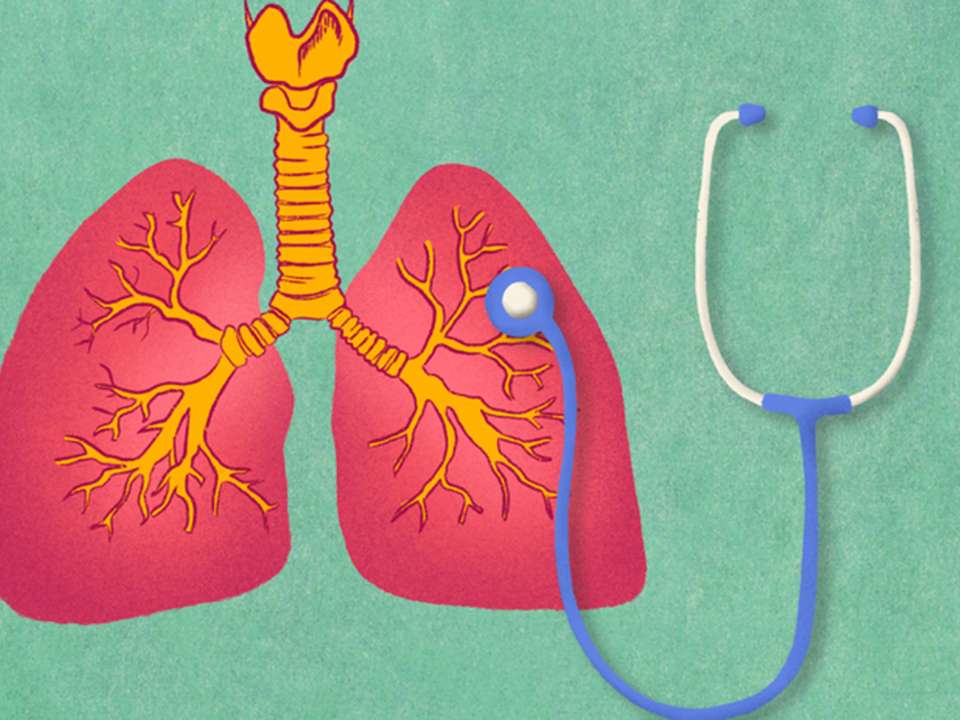
There are a lot of stereotypes out there about multiple sclerosis (MS), a chronic disease that can lead to vision loss, trouble walking and muscle weakness. But did you know that, despite how serious it can be, it’s possible to live a full life with it?
“MS is a very serious disease that is lifelong. There are, however, many treatment options now available to help prevent disability and slow down progression,” says Dr. Meghan Romba, a neurologist who sees patients at the Multiple Sclerosis Center at UW Medical Center – Northwest.
Morgan Larson, who lives in North Seattle, and Brooke Yool, who lives in Lynnwood, Washington, both have MS. Learn from them what life with MS looks like and what you can do if you think you have it.
What is multiple sclerosis and what causes it?
MS is an autoimmune disorder that causes the body’s immune system to attack myelin, a protective covering that wraps around nerve fibers. This can damage them and make it hard for the brain and body to communicate, leading to issues with balance, dizziness, shaking and numbness.
Larson and Yool both have a type of MS called relapsing remitting (RRMS). They experience flare-ups of MS symptoms followed by periods of few or no symptoms.
According to Romba, 85% to 90% of people with MS have RRMS. The remainder of people have primary progressive MS (PPMS), in which the severity of symptoms progresses over time in the absence of any relapses.
As someone ages, someone with RRMS can see their symptoms progress; this is called secondary progressive (SPMS).
No one knows what exactly causes the disease. Genetics, viral infection, smoking and other autoimmune diseases may play a role. Another factor? Something we Pacific Northwesterners know all too well: Low vitamin D.
“There is considerable epidemiological evidence that vitamin D deficiency increases the risk of MS and that adequate vitamin D levels may protect against developing MS,” Romba says. “Furthermore, having a good vitamin D level if you have MS might help fight against disability.”
MS is more common in cisgender women and people assigned female at birth. Symptoms usually start between ages 25 and 40. Larson was diagnosed in her late 20s; Yool, when she was 38.
What are the first symptoms of multiple sclerosis?
When MS symptoms first appear, they may be subtle and attributable to many different conditions.
Larson’s symptoms came on gradually, starting with fatigue.
“Driving home from work, I’d have to pull over to take a nap,” she says.
Then more symptoms started piling up: blurred vision, difficulty walking and numbness and tingling in her legs and feet.
She kept going to different doctors who dismissed her symptoms until, one day at work, she collapsed trying to walk from her desk to the restroom. She went in for an MRI and, less than 24 hours later, was diagnosed with MS.
“For friends and family it was really scary and shocking to hear, but for my husband Nick and I, it was a relief because we finally had an answer,” she says.
Yool’s symptoms came on suddenly. On a run after work, her left leg collapsed underneath her. The next day, the left side of her body was unbalanced; a day after that, she couldn’t climb stairs.
She already suspected MS, having worked with MS patients as a Pilates instructor and after the neurologist she saw for migraines brought it up.
“I was a little confused, though, not knowing what my future was going to be like,” she says.
Other early signs of MS include weakness, double vision, cognitive issues and problems with incontinence. Along with an MRI, doctors use neurologic exams and lab tests to confirm the diagnosis and rule out other possible causes, Romba says.
Why is catching multiple sclerosis early important?
While symptoms of MS may seem to come on suddenly, getting a correct diagnosis can take much longer. Larson says the process took her two years.
“For most people, it comes and goes, but from my MS taking such a long time to pinpoint there has been quite a bit of damage in my brain and spine. I have symptoms all the time, but with my medication, nutrition and exercise, I’m in a much better place than I used to be,” she says.
Since MS causes damage — and severe symptoms — as it progresses, it’s important to go to the doctor if you have symptoms. Even if diagnosis takes a while, like it did for Larson, starting treatment as soon as possible can make a big difference.
“I think the fact that Morgan came in when she did and started treatment right away was incredibly important for staving off further disability,” says Romba, who is Larson’s doctor.
Yool was diagnosed in 2012 by a different doctor who didn’t give her much hope about her disease progression. But she, too, has been able to manage her symptoms and only rarely gets flare-ups.
Multiple sclerosis treatment helps prevent disease progression
Medication plays an important role in MS treatment — and there are more medications now than ever before that help people with MS manage the disease.
“The hope is that new medications will help reduce this risk of secondary progressive MS or slow down progression,” Romba says.
Every six months, Larson and Yool receive an infusion of a drug called Ocrevus that depletes the immune cells that attack myelin. There are other types of infusion medications, as well as injections and pills.
Initially, Yool was on a medication that didn’t suppress her immune system as much — but then she had an MS relapse with new symptoms. Now, her stronger medication helps prevent future flare-ups, but she has to be careful and try to avoid situations where she could expose herself to infection.
When Yool got COVID-19, for example (despite being vaccinated), her symptoms were severe: A 103-degree fever, chest tightness, lots of coughing. After five days of antiviral medication and over a week of resting, she felt mostly recovered.
MS has done enough damage that Yool still has weakness in her left leg, but her treatment keeps that weakness from worsening.
“I’ve been doing a lot of strength training. I go for short walks a lot. I’ve been working with nutrition coaches to see if I can increase my muscle mass,” she says.
Larson has seen an improvement in her symptoms. When she was first diagnosed, she couldn’t drive and had to quit her job. Now, she can drive (though not in the dark) and is working again; she still has some vision and walking issues.
Along with Ocrevus, she takes a second medication in pill form every 12 hours to help her with walking, plus meets monthly with Romba.
“I get great care. When I go into the MS Center, I don’t feel like just a patient; I feel like they see me as a human. I always have incredible interactions with everyone there,” Larson says.
Physical therapy, muscle relaxants, regular exercise, and preventing the body from getting too warm are also key to long-term MS management, while corticosteroids and plasma exchange can help ease symptoms during flare-ups.
Treatment can prevent flare-ups, but not pseudo flare-ups
Treatment not only helps prevent disease progression, it also helps prevent symptom flare-ups in people with RRMS.
This is a big deal, because flare-ups can cause lasting damage plus involve symptoms such as limb numbness, pain or weakness; vision problems or loss; dizziness and loss of coordination or balance; severe fatigue; and memory, speech or bladder issues.
Even with treatment, though, there are times people may experience what seems like a flare-up but is actually a short-term period of worsened MS symptoms that doesn’t cause any myelin damage and resolves quickly. This is called a pseudo-flare and can be related to stress, lack of sleep or recent illness.
Larson experienced this after her first dose of the COVID-19 vaccine.
“Two days after the dose, I worked out. Peloton is my workout, and every time I bike I have to wear six ice packs to keep me cool. But this time I noticed my breathing was heavy, I couldn’t catch my breath and my fingers started to curl up so that I couldn’t open them,” she says.
Soon, she couldn’t walk or speak. Her husband rushed her to the emergency department, neither of them knowing if she would regain those functions. After spending the day in the emergency room, she was able to walk out on her own when she was discharged.
An MRI confirmed that she wasn’t having a relapse; temperature elevation from the vaccine and working out had caused temporary worsening of her symptoms. She has since had her second dose and two boosters and hasn’t had any more pseudo-flares.
Living a full life with MS
Both Larson and Yool believe it’s important to be open about what having MS is like — not only to help people who are newly diagnosed or think they might have MS understand, but also to educate others that MS is not a death sentence.
While both women must factor managing MS into their lives, they also get to do a lot of things they enjoy. Larson has a 15-month-old daughter, Peyton, and recently gave birth to twins. She loves spending time with her family, working at her day job in child life services at Seattle Children’s, and doing activism work in the MS community.
Yool owns and manages three businesses with her husband, plus teaches biology at Seattle Central College. She and her husband love to travel together; their favorite destination is Istanbul.
“The diagnosis of multiple sclerosis can be devastating, but there is a lot of hope as well. You can have MS and still live a happy and healthy life,” Romba says. “Before the 1990s, we had no disease modifying therapy for multiple sclerosis. We now have well over 20 medications that are FDA-approved. This has dramatically changed the course of the disease for patients and has helped give people their lives back.”

 Healthy ideas for your inbox
Healthy ideas for your inbox





